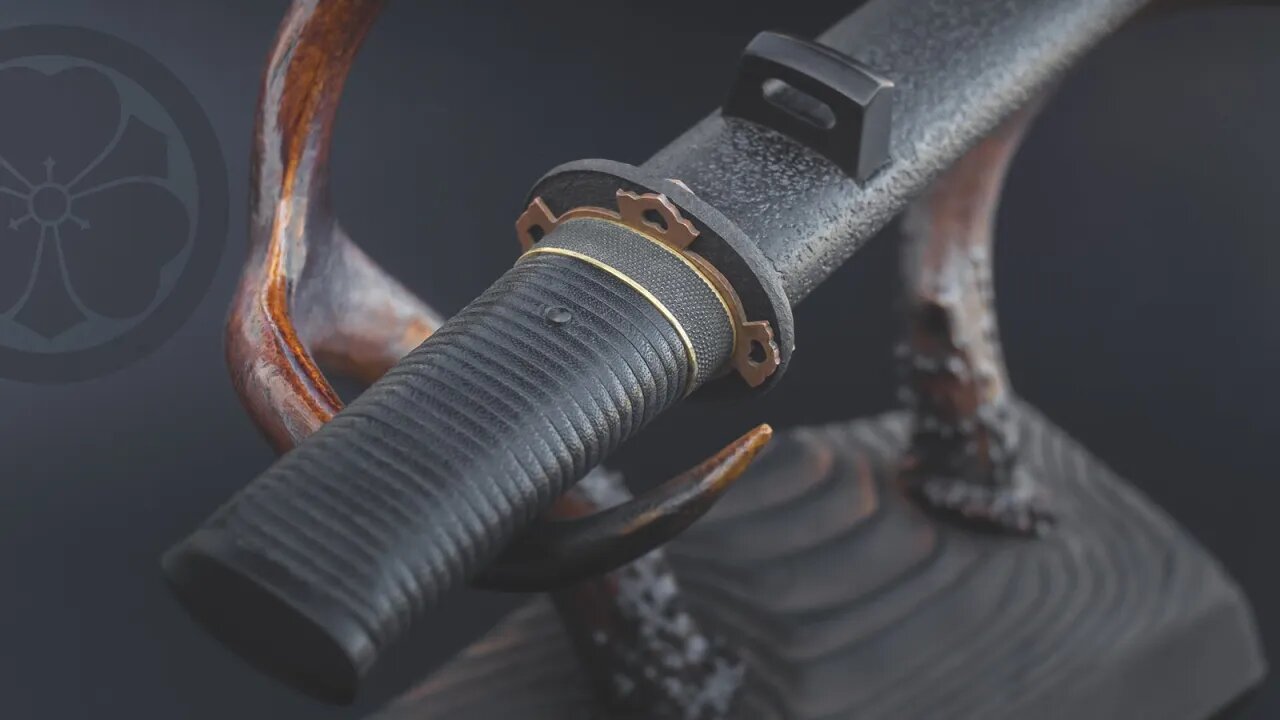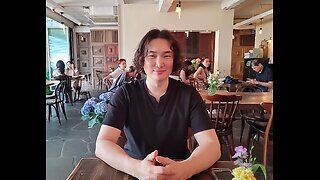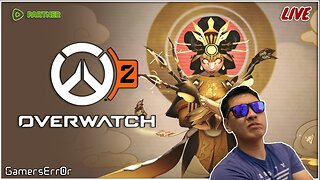Premium Only Content

SOTW #19 - Assembling the Inome Tanto
Making-of and photos here: http://islandblacksmith.ca/2019/07/inome-tanto/
The inome (pronounced “ee-no-may”, 猪の目, eye of the boar) name comes from the pierced heart-shape designs on the decorative o-seppa (washers) on either side of the tsuba (handguard). This lovely motif is ubiquitous in Japan, seen often in architecture, furniture, and sword mountings. In this context, the inome symbol conveys the idea of the always forward-moving wild boar of Japan’s forests and mountains, never giving up or retreating.
This tanto was forged from an antique horse-drawn carriage spring in 2016, was used at several demos as an example of the forged surface as it comes out of the fire, made a cameo in a short film in 2017 as one of the filing stages, was finished with geometry inspired by a visit to Japan in 2018, and is the first of my blades to incorporate antique sword parts in its mounting (there are 4, the rest is newly crafted for this piece).
The blade began as a reclaimed carriage spring and was hand forged in a charcoal fire, smoothed with files and a sen scraper, differentially hardened using traditional water quench yaki-ire, and polished by hand with natural Japanese water stones.
This tanto consists of ten separate components that began as twenty-two individual pieces, crafted and finished entirely with hand tools and traditional techniques.
Materials for the chisagatana style koshirae mounting include Japanese hounoki wood for the handle and scabbard, copper bus bar for the habaki, reclaimed brass doorplate for a seppa, buffalo horn for the mekugi and kurikata, and an iron spike salvaged from thirty feet under the Pacific for the tsuba. The centerpiece of the mounting comes from an outdoor antique market in Kyoto, a gold-accented Edo-era fuchi made from nanako-ji (魚子地, fish roe) textured shakudo (a traditional alloy of gold, silver, and copper). The tsuba sits between two Showa-era zouheitou (officer’s sword) o-seppa with pierced inome (猪の目, eye of the boar) motifs. The saya is finished in black sabi-nuri (rust texture) style ishime-ji (stone surface) made from natural source urushi lacquer and ground tea leaves, and the koiguchi band is also antique.
Blade has a hira-zukuri profile, suguha hamon with artifact on the omote, an iori mune, and an ubuha (unsharpened portion near the hamachi). The blade is 8.75″ long, overall length is just under 13.5″, and the overall length of the koshirae is just over 15″.
Specifications
長さ/刃長 Nagasa: 7 sun 3 bu 5 rin (222mm)
元幅 Motohaba: 9 bu (27mm)
重ね/元重 Motokasane: 2 bu 3 rin (7mm)
反り Sori: uchizori
中心/茎 Nakago: 3 sun 6 bu (109mm)
柄長 Tsuka: 3 sun 2 bu 5 rin (93mm)
拵全長 Koshirae: 12 sun 6 bu (382mm)
形 Katachi: hira-zukuri, iori-mune
刃文 Hamon: suguha, with ubuha
帽子/鋩子 Boshi: ko-maru
中心/茎 Nakago: futsu, kuri-jiri, one mekugi-ana, signed near the tip
銘 Mei: hot stamped katabami-ken kamon
拵 Koshirae: chisagatana, issaku (with the addition of four antique parts)
Material: Reclaimed carriage spring steel, Edo-period gold and shakudo nanako fuchi, antique brass koiguchi and Showa-era zouheitou o-seppa, ocean-salvaged iron spike, copper bus bar, brass doorplate, buffalo horn, Hounoki, leather, natural urushi and tea leaves, antique silk cord
-
 LIVE
LIVE
INFILTRATION85
42 minutes agoHi, I'm INFILTRATION
746 watching -
 LIVE
LIVE
GuardianRUBY
2 hours agoRumble Takeover! The Rumblings are strong
656 watching -
 LIVE
LIVE
Etheraeon
9 hours agoWorld of Warcraft: Classic | Fresh Level 1 Druid | 500 Follower Goal
449 watching -
 LIVE
LIVE
VapinGamers
1 hour ago🎮🔥Scrollin’ and Trollin’: ESO Adventures Unleashed!
436 watching -
 LIVE
LIVE
a12cat34dog
2 hours agoGETTING AFTERMATH COMPLETED :: Call of Duty: Black Ops 6 :: ZOMBIES CAMO GRIND w/Bubba {18+}
225 watching -
 LIVE
LIVE
NubesALot
5 hours ago $0.02 earnedDark Souls Remastered and party games
238 watching -
 LIVE
LIVE
GamersErr0r
17 hours agoOverwatch 2
217 watching -
 LIVE
LIVE
Phyxicx
3 hours agoRocket League with Friends! - 11/22/2024
96 watching -
 LIVE
LIVE
STARM1X16
3 hours agoFriday Night Fortnite
101 watching -
 29:51
29:51
Afshin Rattansi's Going Underground
18 hours agoJimmy Dore on Ukraine & WW3: Biden Wants a War that Trump CAN’T Stop, ONLY Hope is Putin’s Restraint
56.7K18